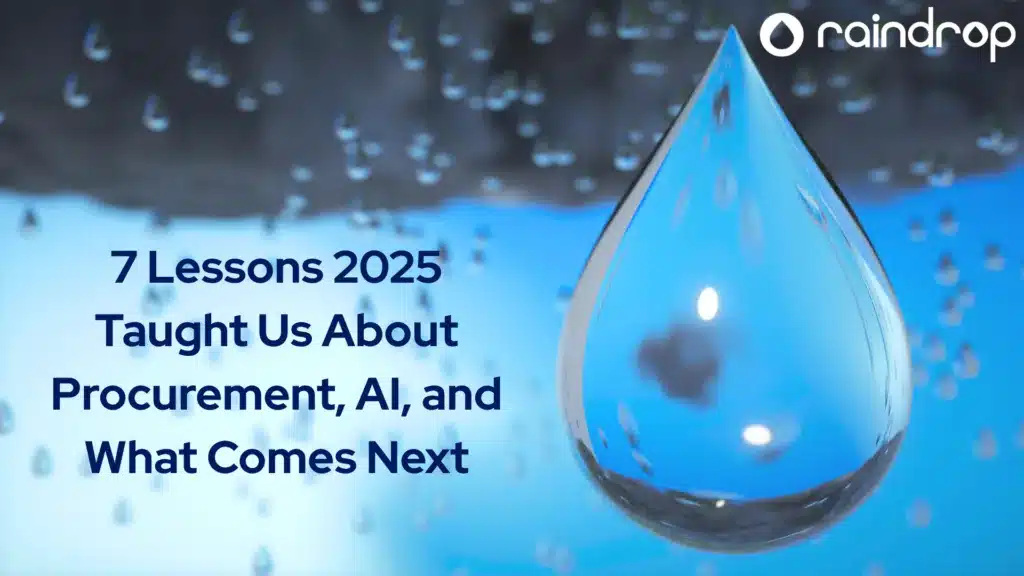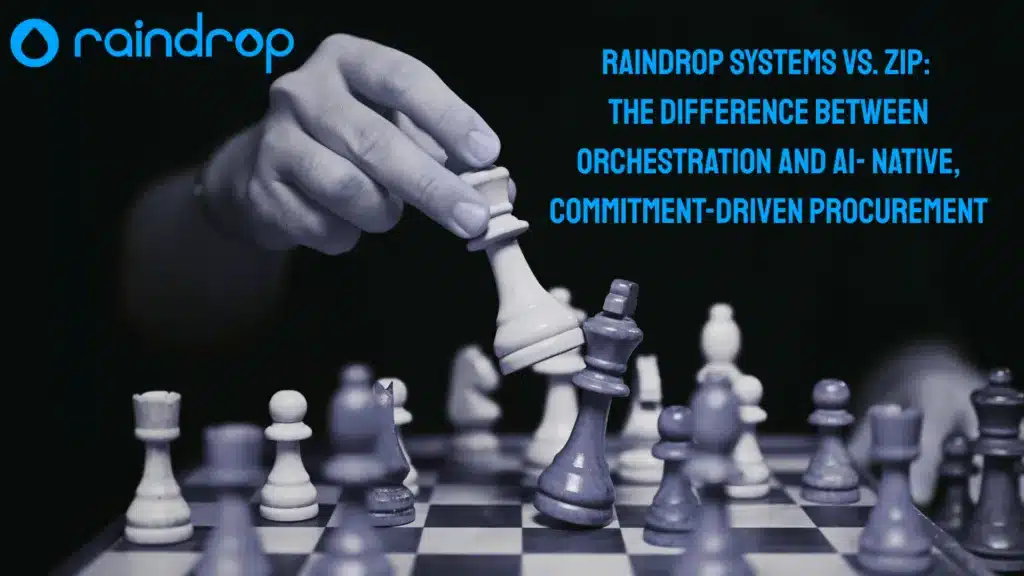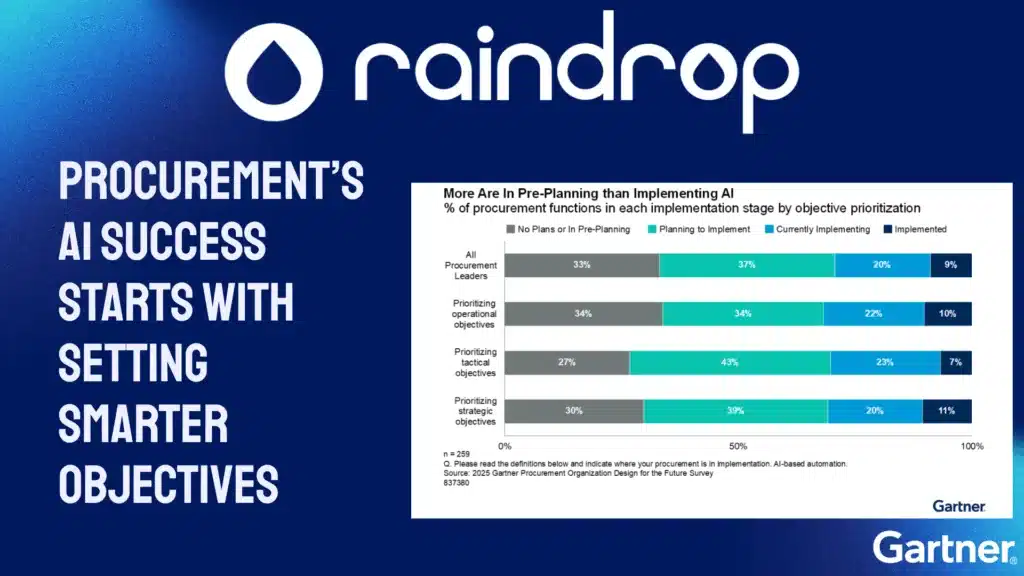Stop the agentic confusion: what you need to know now
Procurement has a knack for attracting dashboards. Each one promises answers, yet somehow you end up staring at a collection of pie charts that confirm what you already suspected: There’s still too much manual lift. Maybe your workflow tool pings you when you overspend or flags missing supplier paperwork, but let’s not kid ourselves, most of the tech isn’t making decisions for you.
Here’s the new pitch: Yesterday’s “automation” is today’s “intelligent agent”; apparently, every platform is now smart, proactive, maybe even a step ahead of you. (Spoiler: Most are just better wrappers on old ideas.)


So which flavor do you want? The assistant that quietly guides you to the right form, or the agent that finds hidden savings while you’re stuck in meetings?
In spend management, efficiency can’t just be a slogan. Stack up yet another AI-powered widget, and you’ll end up with more screens, more noise, and less clarity. The trick is asking the right questions: what problems do these systems really solve, and are you moving any closer to measurable results?
So, where does your procurement team fit: assistant or agent? And can you spot the difference between progress and more tech for its own sake? The stakes are real, because around here, what matters is simple: Does it save you time, money, or headaches?
Assistant vs. Agent vs. Agentic—Why It Matters Now
This is where most conversations get lost in a haze of buzzwords, so let’s skip the mystery novels and get specific. If you’re shopping for “AI” in procurement, you’ll see a parade of fancy labels. But the differences can mean the gap between a tool that gently nudges people to do their jobs, and one that turns your process upside down—for better or worse.
AI Assistant is essentially your digital helper, complete with a script. Think of those early help desk chatbots that greeted you with, “How can I help?” and maybe pointed you to the right FAQ. In procurement, an assistant can answer routine questions (“Where’s the NDA template?”), fetch data, or guide someone through a new purchase request. Useful? Yes. But the assistant only works with what it’s told, and it never colors outside the lines.
AI Agent is the next leap. Instead of waiting for you to ask, agents can monitor, suggest, and sometimes even act. Imagine software that notices a contract’s about to expire and starts the renewal workflow before anyone has to scramble. Or an agent that alerts you to a spike in supplier risk and kicks off a review. The agent is still operating on your rules, but now it can apply them without waiting for a human prod.
Agentic AI is where things start to feel like the engine runs itself. Now the intelligence isn’t just following scripts; it’s patterns, modeling what-if scenarios, and proposing strategies you might never spot on your own. Picture a system that looks across every business unit, identifies overlapping suppliers, suggests consolidations, simulates outcomes, and drafts recommendations for the CFO before your morning coffee.
If you want a deep dive into these categories, Gartner offers a clear breakdown in their research on when to use (or avoid) AI agents; see the full report breakdown.
So, when you’re comparing options, ask yourself: Do you need a helper, a doer, or a smart partner who spots moves ahead of the pack?
Build, Buy, or Bolt On: The Pros, Cons, and Pitfalls for Procurement
Option one: Buy it baked in
This route is for teams who want AI built into their S2P platform from the ground up. The upside? Your agent lives where your data lives, learns from your actual spend patterns, and grows smarter with every transaction. Built on platforms like Google Cloud, these systems train on your processes, not generic workflows. No more waiting for features that may never come, just AI that speaks your company’s language.
Option two: The bolt-on agent
Maybe your systems are working fine, but you want a layer of intelligence over the top, a co-pilot, an automation tool, something that plays nicely with what you’ve got. Sounds flexible, and it can be (especially for those stuck with legacy tools). But like any new hire, these AI agents need clear guidelines, training data, and boundaries to be effective. Plus, bolting third-party AI on top usually means wrestling with integration, middleware, and the wonderful world of “who’s responsible when something breaks?”
Option three: Build your own
This isn’t for the faint of heart or anyone with a skeleton IT crew and zero appetite for surprise invoices. But if you’ve got the resources, building an agent that pulls from your own data, talks to your workflows, and flexes to your business rules means total control. You get the agent that fits your playbook, not someone else’s. The tradeoff: investment, governance, and a fast track into the land of “do we even have the right data?”
If you’re a visual type, draw yourself a table. Columns for cost, speed, customization, maintenance, and flexibility. For each path, score yourself honestly. The truth is, no route is perfect. The trick is picking the option that won’t leave your team chasing its own tail, or regretting the spend.
Which of these paths matches where your team really is today, and what’s going to get you the kind of AI that’s more lifeline than headache?
What AI Looks Like on the Ground (Not Just in Vendor Demos)
Let’s swap out generic promises for what these flavors of AI look like in a real procurement workflow. You’re not buying a science project; you want technology that solves headaches (not creates new ones). Here’s where the theory hits the purchasing floor.
AI Assistant: The Helpful Guide
Picture your helpdesk chatbot with a procurement badge. Someone on your team types, “How do I request a laptop?” The assistant cheerfully supplies the correct (read negotiated pricing and support) option, walks them through basic questions like where to deliver, and simply sends for approval or places the order. Or, “Can I get a one-click NDA?” The assistant generates a draft in moments, fills in the blanks, and can send it off for signature. Helpful, yes. But all roads still lead back to a person making the initial inputs and final decisions.
AI Agent: The Proactive Partner
Now, zoom out. The agent lives a level deeper, not just reacting, but looking out for you. It spots a contract coming up for renewal in sixty days and alerts the responsible manager. Or maybe it notices that three suppliers are set to lose ESG certifications next quarter and starts the renewal workflow automatically. It doesn’t just hand you data, it nudges or initiates the next step, so you’re not left patching holes after the fact.
Agentic AI: The Strategy Engine
Here’s where it gets interesting. The agentic layer acts like a strategist with context across your whole business. It scans spend data across business units, flags overlap, and recommends consolidating categories; it might even draft a sourcing event to go live next week. Or it tracks market indices for your top commodities, simulates a few pricing scenarios, and proposes a strategy for the CFO. You’re not just avoiding risk; you’re putting your team a move ahead.
For every level, ask yourself: what’s getting unlocked? Assistants give you answers. Agents hand you progress. Agentic AI rewrites the playbook.
Where do you see your next procurement win coming from: a smarter guide, an active partner, or a strategic advisor that’s always scanning for the real opportunity? Need more guidance? Check out our blog, The Real Difference Between AI Agents and Agentic AI (and why it matters for Spend Management).
The AI Road Ahead: Start Small, But Get Real
The gap between “AI” as a promise and as a tool that delivers is wide, and where you land on that spectrum comes down to asking sharper questions than, “Does it have AI?”
Take stock first. Are you mostly wrangling routine questions, or do you find your team swamped with contract renewals, risk checks, and spend analysis across business units? Do you have the data and workflows in place to support an agent, or would a strategic assistant fix most of your headaches for now?
The best place to start isn’t with the shiniest new tech, but with the real pain points in your procurement process. What eats up your time? Where do savings and compliance slip through the cracks? Let these answers guide your next step, whether that’s piloting an agent, experimenting with bolt-ons, or doubling down on better data.
Remember, procurement teams that win don’t chase every new trend. The teams that win choose tech that bends to their process, drives clear outcomes, and leaves them more room to lead. The future may be agentic, but success starts with a clear-eyed look at where you are and what you truly need.
What’s the smallest AI experiment you could run this quarter that would solve a real problem, and help you see, in plain numbers, what smart automation unlocks for your team? Raindrop us a line and we will help guide that AI experiment for the best results.






